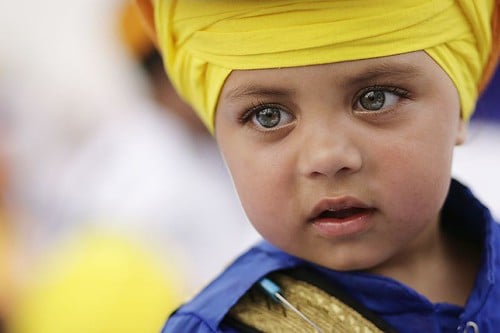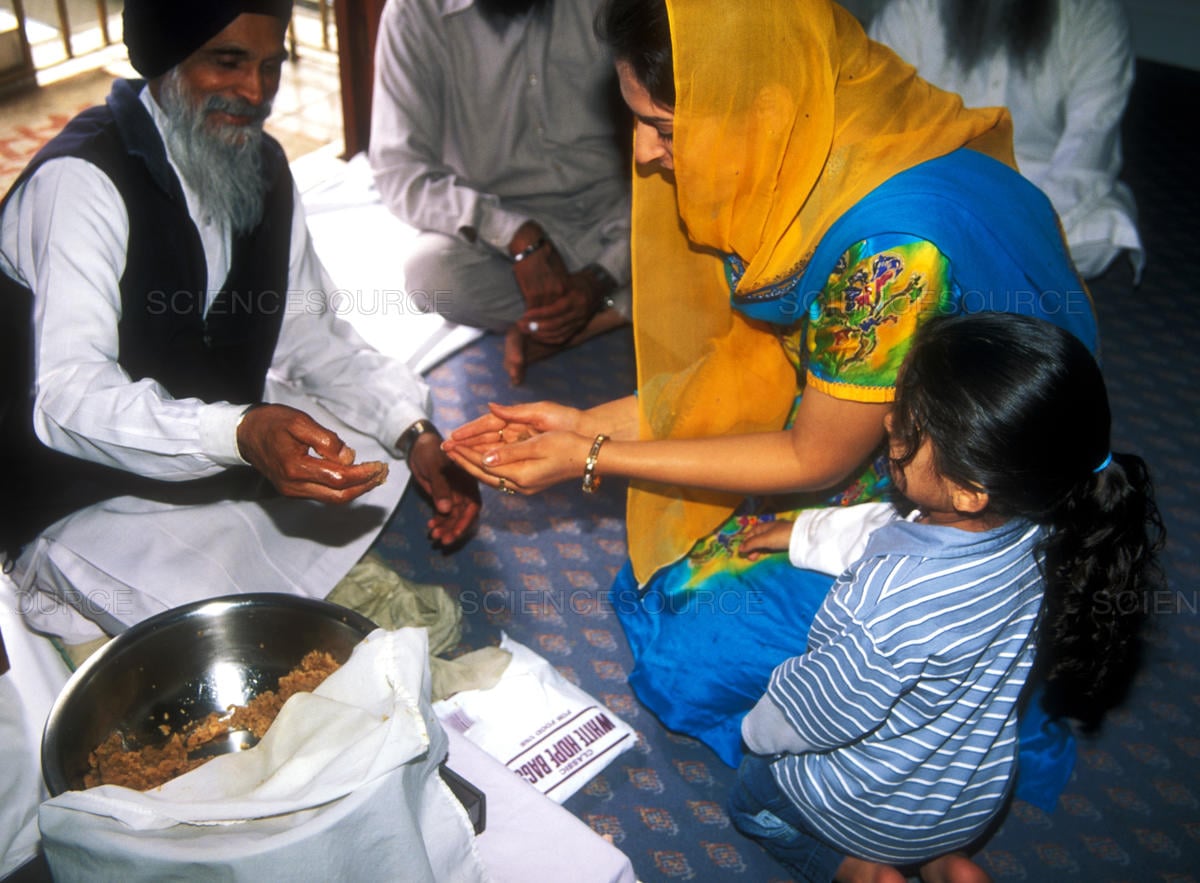Introduction.
The Sikh religion is not very well known despite being the fifth-largest organized religion in the world, with more adherents than Judaism. This article surveys both popular and academic literature regarding Sikh symbols and traditions along with the debates and controversies that surround them. As is the case in nearly every sphere of life, almost nothing in the Sikh religion is clear cut and without ambiguity, although strict followers like to believe otherwise.
An observant Sikh male is most easily recognized from his turban and unshorn facial hair. The most commonly known Sikh symbols are the 5K's:
- "kesh" (unshorn hair)
- "kanga" (comb to maintain the unshorn hair)
- "kirpan" (sword for self-defense and to protect the vulnerable)
- "kachcha" (underwear or breeches for mobility and agility)
- "kara" (iron and steel bracelet)
There's a school of thought according to which the 5Ks were originally 5 weapons (Malcolm, p. 182). However, the current 5Ks are extremely well known and I won't discuss them here except to note that all of them seem aimed at causing the Sikh to stand out from the Hindu (stand up and be counted, if you will). I had always wondered about the breeches, but perhaps they were proposed for ease of mobility and agility in opposition to "girding up the lions" as Hindus do with their "dhotis" (wraps worn around the pelvis) (Cunningham, p. 318). Finally, I will point the reader to Nikky-Guninder's rather artful (albeit somewhat fanciful) attempt to connect the origin of the 5Ks to the Guru Granth (Handbook, p. 616-618).
Likewise, there are many traditions associated with ceremonies (birth, baptism/initiation, marriage, death, akhand paath), which I do not elaborate upon here. However, beyond these there are several other key symbols and traditions of the Sikhs, which I wish to explore. There is significant mystery and debate around the origin and development of these symbols and traditions. This article discusses each of the following topics with references from popular and academic literature for those interested in delving deeper.









